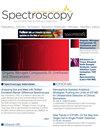ICP-OES as a Viable Alternative to ICP-MS for Trace Analysis: Meeting the Detection Limits Challenge
IF 1.5
4区 化学
Q4 SPECTROSCOPY
引用次数: 0
Abstract
This month’s column focuses on the applicability of inductively coupled plasma–optical emission spectroscopy (ICP-OES) fitted with a high efficiency nebulizer as a real-world alternative to ICP–mass spectrometry (ICP-MS) for certain applications. It is well-recognized that ICP-MS is the most widely used and recommended technique for ultra trace element analysis because it offers extremely high sensitivity. However, if the necessary sensitivity is achieved, an ICP-OES instrument can be a viable option because it is simpler to operate and less costly to maintain than an ICP-MS instrument. In this study, the sensitivity of ICP-OES was significantly enhanced by using a highly efficient yet robust sample introduction system. The increased efficiency was accomplished by employing an external impact surface positioned close to the nebulizer gas orifice at an optimized angle. The robustness by a non-concentric design was achieved by separating the gas and sample channels throughout the entire body of the nebulizer. The results of applying this approach to the ICP-OES analysis of a select group of sample matrices and meeting the required challenging detection limits are demonstrated.ICP-OES可替代ICP-MS用于痕量分析:满足检测限的挑战
本月的专栏重点关注电感耦合等离子体光学发射光谱(ICP-OES)与高效雾化器的适用性,作为现实世界中某些应用的icp -质谱(ICP-MS)的替代方案。ICP-MS具有极高的灵敏度,是目前应用最广泛和推荐的超微量元素分析技术。然而,如果达到必要的灵敏度,ICP-OES仪器可以是一个可行的选择,因为它比ICP-MS仪器操作更简单,维护成本更低。在本研究中,采用高效稳健的样品导入系统,ICP-OES的灵敏度显著提高。提高的效率是通过采用一个外部冲击面,以优化的角度靠近雾化器气体孔来实现的。通过分离整个雾化器的气体和样品通道,实现了非同心设计的稳健性。将该方法应用于选定的一组样品矩阵的ICP-OES分析并满足要求的具有挑战性的检测限的结果被证明。
本文章由计算机程序翻译,如有差异,请以英文原文为准。
求助全文
约1分钟内获得全文
求助全文
来源期刊

Spectroscopy
物理-光谱学
CiteScore
1.10
自引率
0.00%
发文量
0
审稿时长
3 months
期刊介绍:
Spectroscopy welcomes manuscripts that describe techniques and applications of all forms of spectroscopy and that are of immediate interest to users in industry, academia, and government.
 求助内容:
求助内容: 应助结果提醒方式:
应助结果提醒方式:


